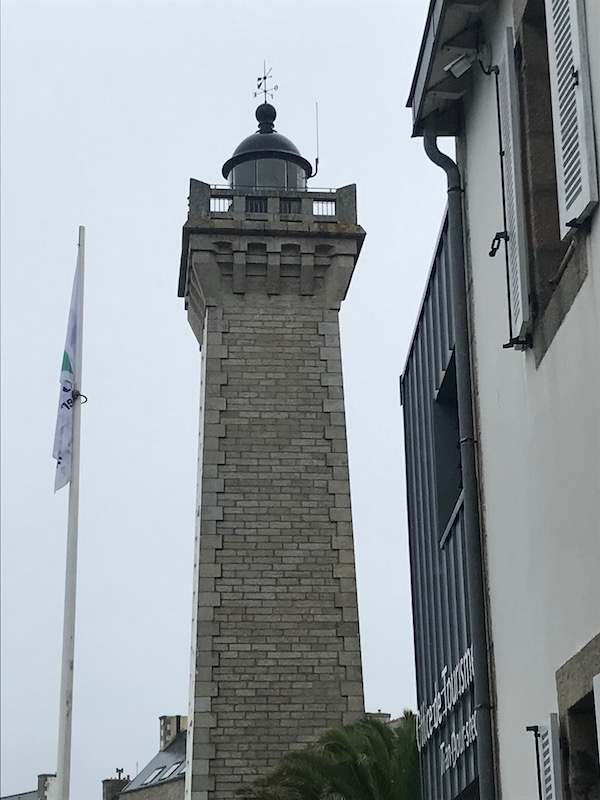Our Blog - Bretagne Trip - Summer 2021 - Roscoff, France
I'll start with the Pink Onion of Roscoff. In the 17th century, a monk brought pink onions from Portugal and taught his fellow monks how to grow the. The onion is a very sweet and fragrant onion characterized by the pinkish-coppery color outside. The onions were sold door-to-door in Britain by men who came from Brittany, known as "Onion Johnnies". It is actually quite a small town, around 3500 people, but the historical center was jam-packed with restaurants, stores, and people. Wikipedia says that during the summer, the town can have as many as 20,000 people due to the influx of tourists as well as the French who come here to a summer residence.
There haven't been that many historical events here, other than in 1548 the six-year-old Mary Queen of Scots disembarked at Roscoff en route from Scotland to may the Dauphin François. There are two houses on the walking tour that have "Mary Stuart" in the name but the information panel actually says that the houses were built AFTER 1548 ... I guess someone thought it would be good for tourism to have something with her name on it. The walking tour was fairly well marked and had information panels throughout the town).
Saint Anne's chapel was the first thing on the tour, built in 1640 by a private couple. It remained private until 1967 when it was bought by the city. After housing the tourist office for a number of years, it now is used for exhibitions. Only the outside .. it was not open when we went by.
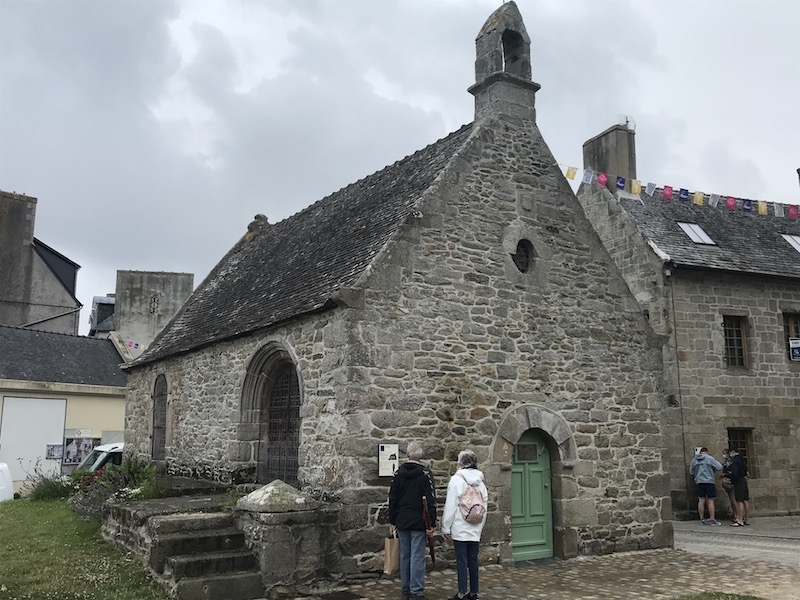
Around town, there are many 16th and 17th century houses that still have round or square towers, which were originally used as lookout towers. At that time, a staircase within a tower was expensive and so this would show the wealth and power of the owner.
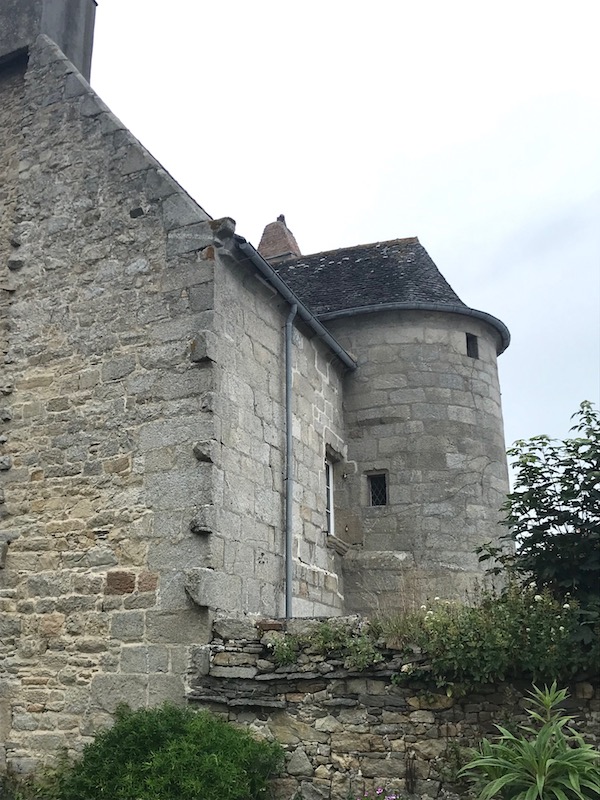
As we turned the corner at the waterfront, we grabbed a picture of the cute little tower on the corner. It belongs to the house and adjoining chapel (seen in the second picture), which is the house named "Mary Stuart" and the chapel of Saint-Ninien. This is one of those 2 houses with Mary Stuarts name that were built after she was in town.
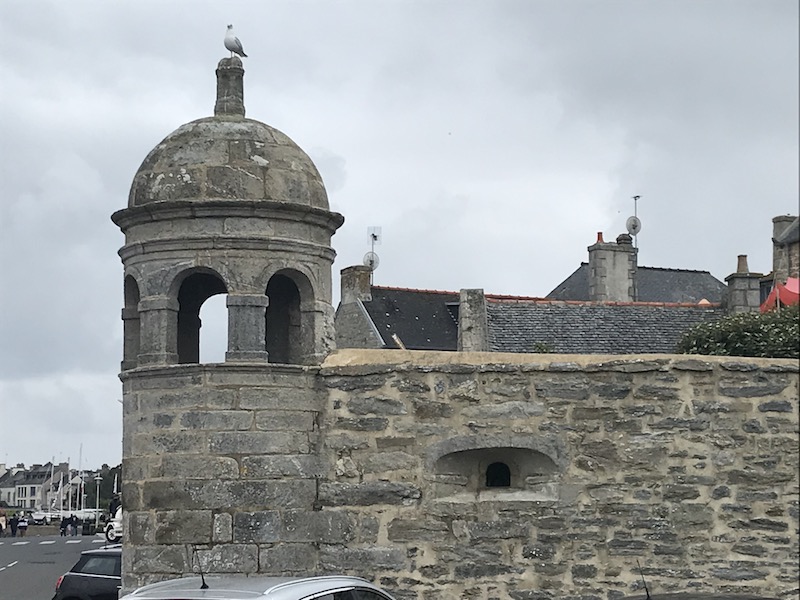
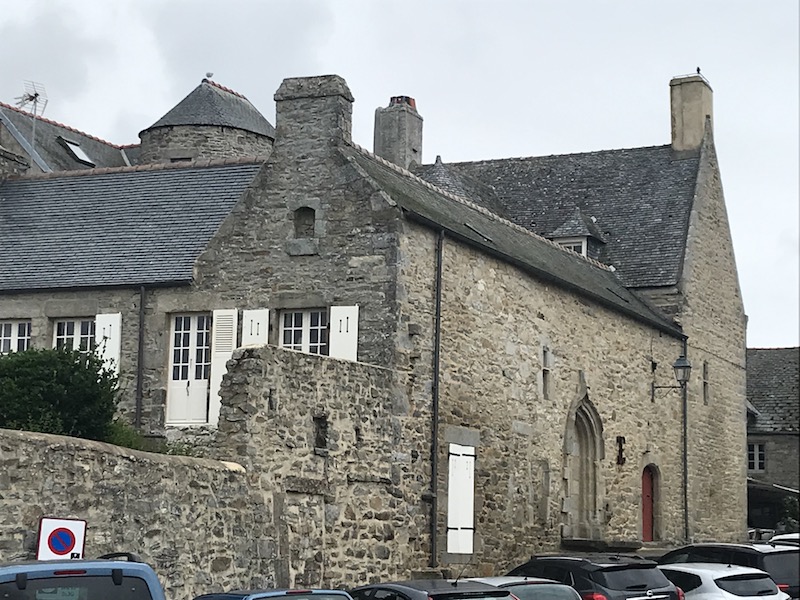
Here you can see a long bridge, which looks like it just goes down into the water. There is a ferry that goes to the Île-de-Batz that departs from the Quay during high tide. But during low tide, you have to walk out on this bridge to get to the departure point for the ferry.
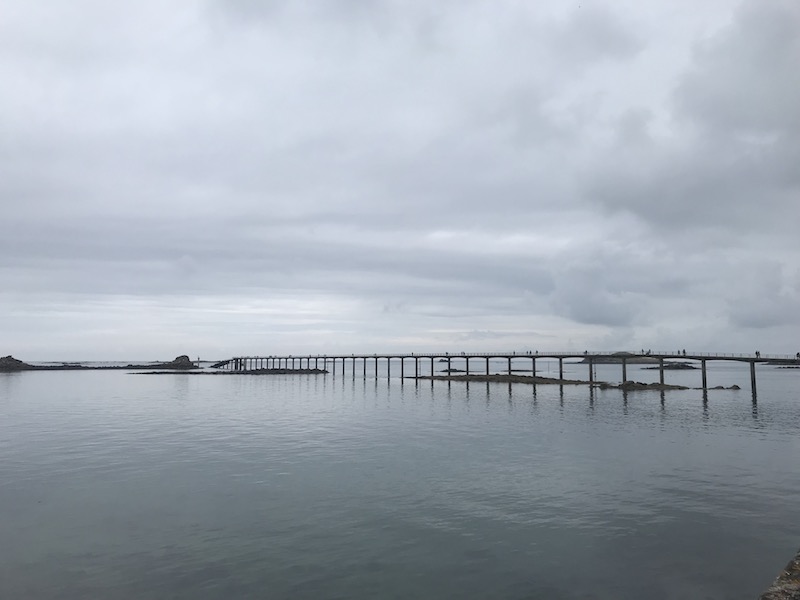
Lucy wasn't really cooperating for the picture with the bridge, but she is still cute!

The historical center, with cobblestone pedestrian streets and granite houses. It was raining that day, and you can see Tom and Lucy huddled in front of this house with some lovely decorations.
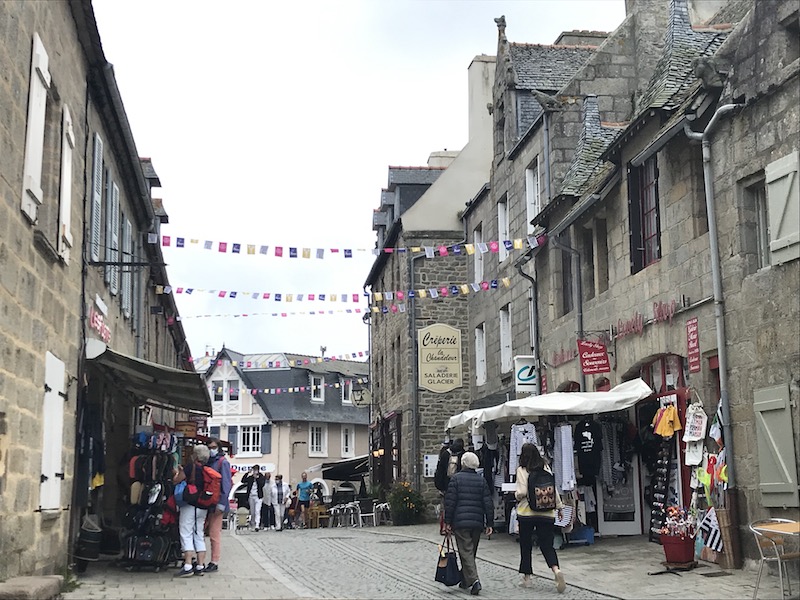
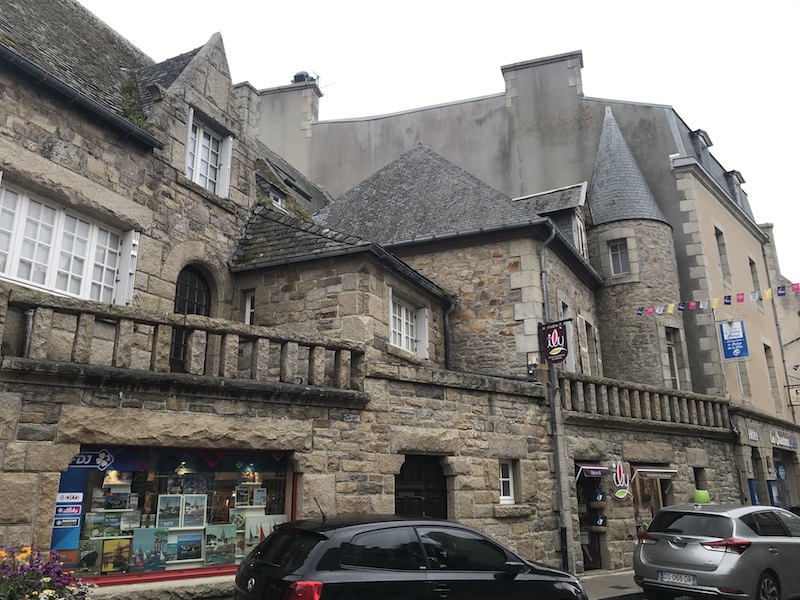
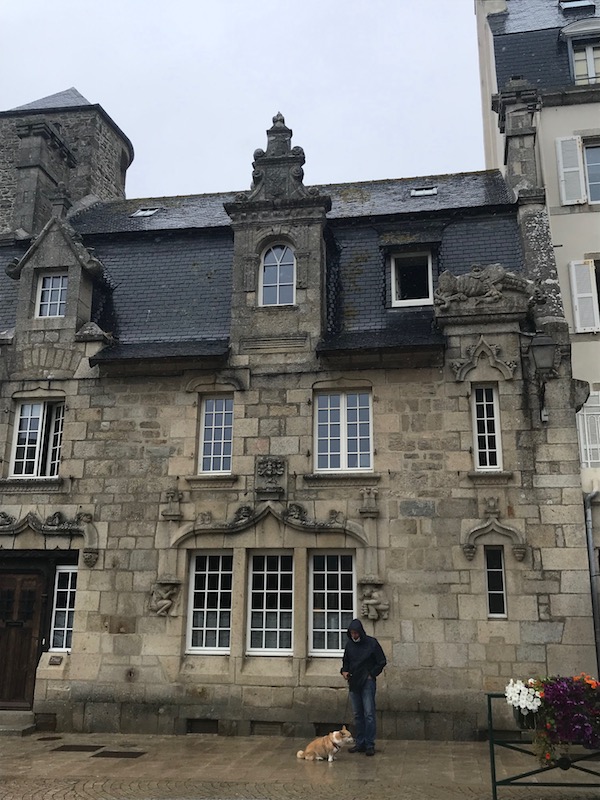
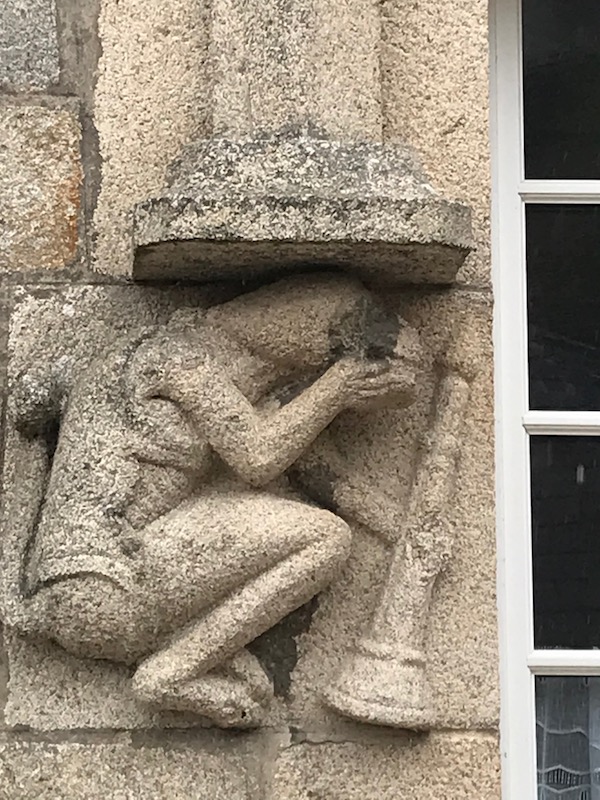
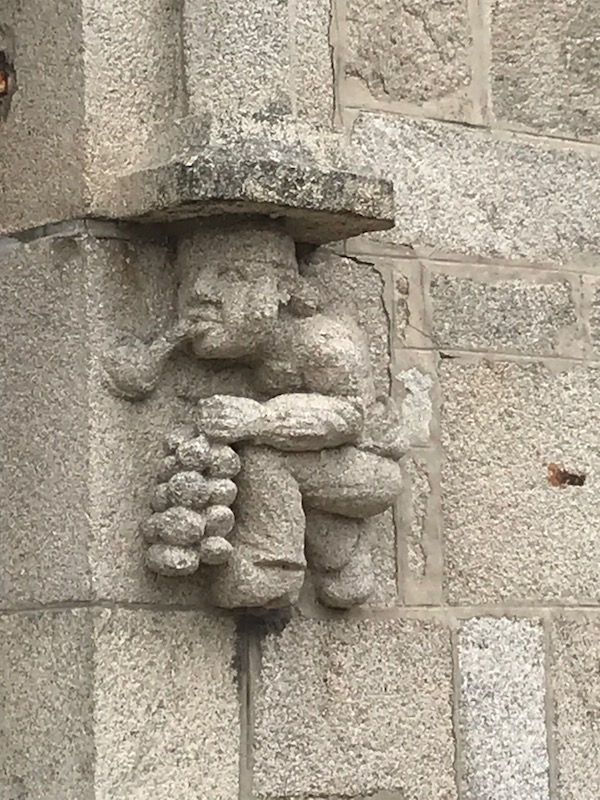
Eglise Notre-Dame de Croas-Batz was founded at the beginning of the 16th century. The Gothic-style church was built between 1520 and 1701, with the Renaissance belfry being added in 1576. The outside walls are decorated with sculptured ships, since it was maritime trade that brought money into the town for the building of the church. Sorry for the bad picture of the outside with the car passing in front, but it was raining and I was short on time :-)

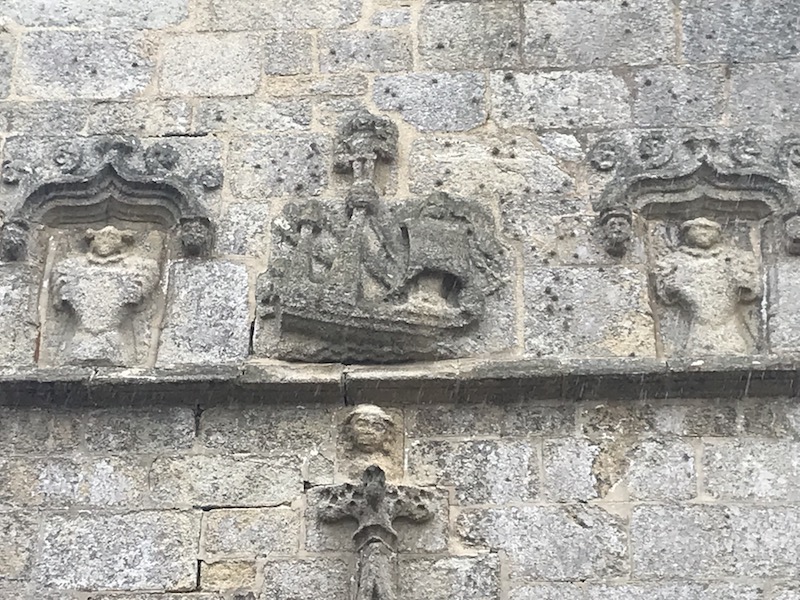
Here you have the Gothic arches in the nave and the two side aisles. You will see yet another barrel-vaulted roof made of wood that has been painted, the shape of which resembles the bottom of a boat. You can also see at the ends of certain areas, there are carved wood figures, similar to those that would be on the bows of ships.
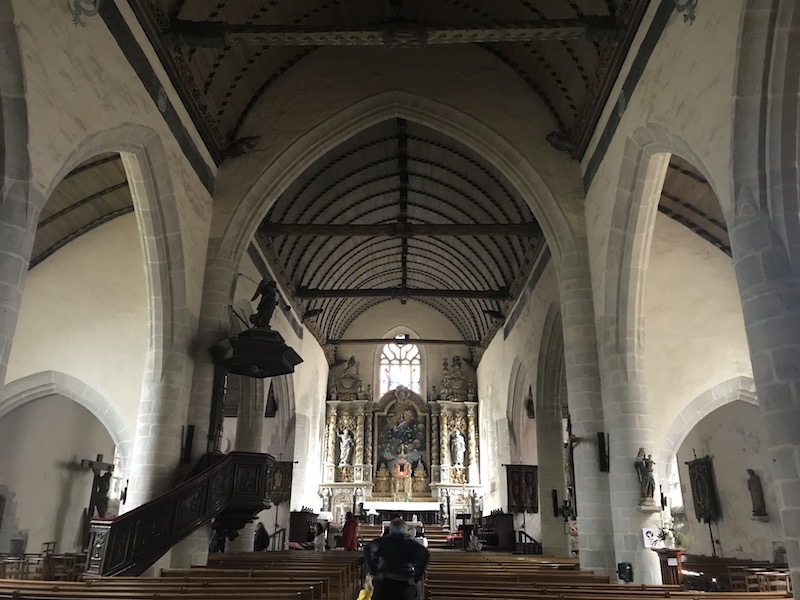
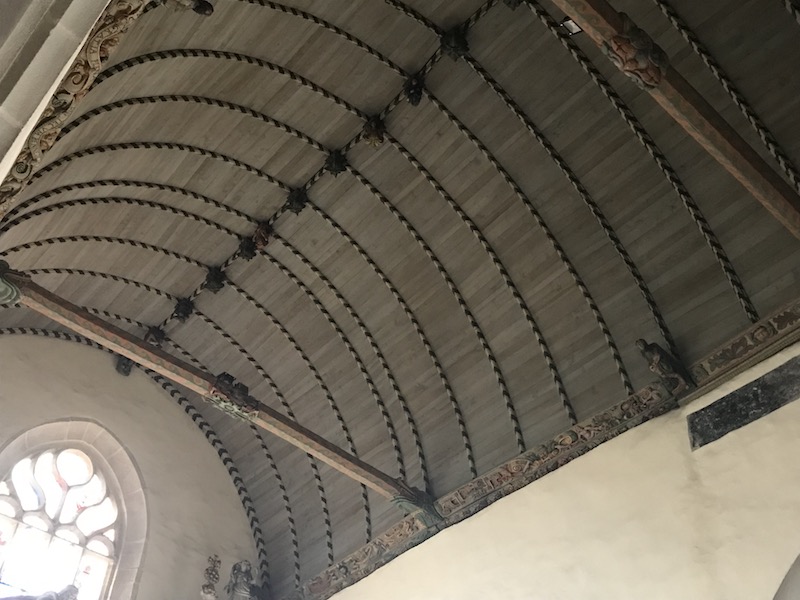
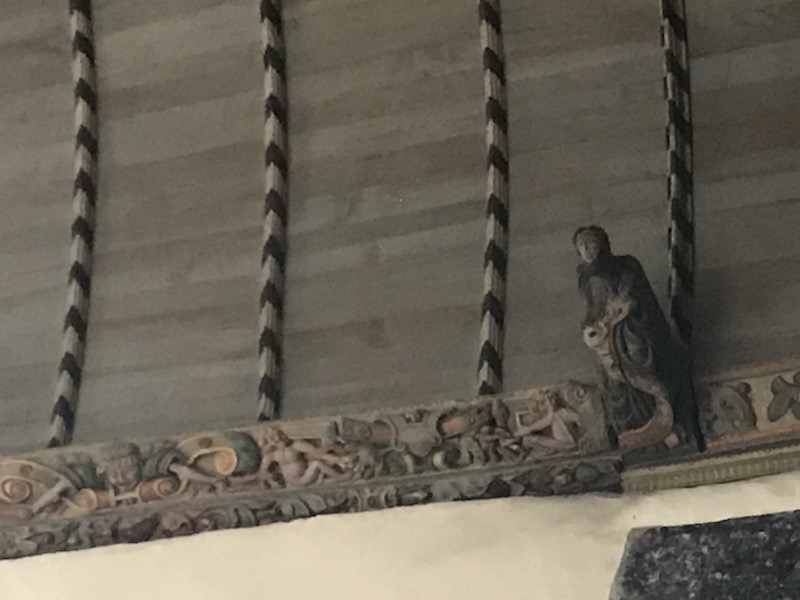
There are several altarpieces that are quite elaborate, mostly Baroque in nature.
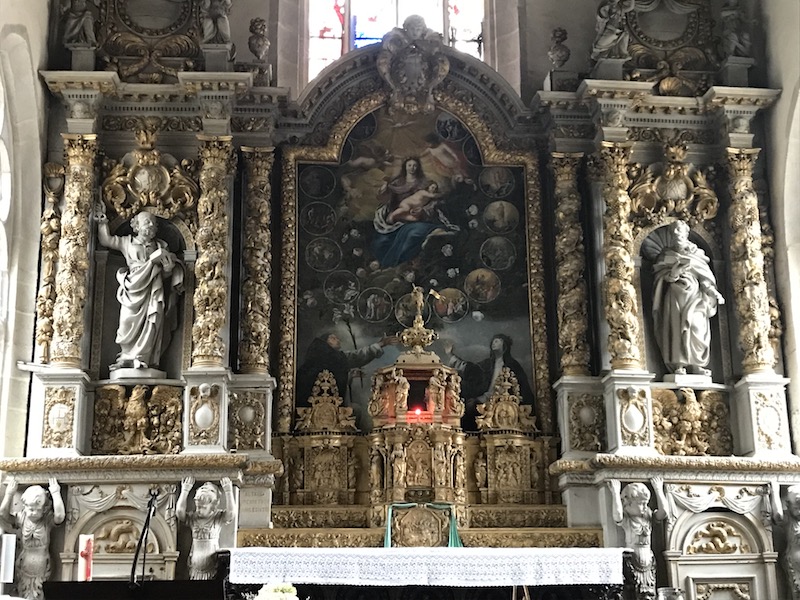
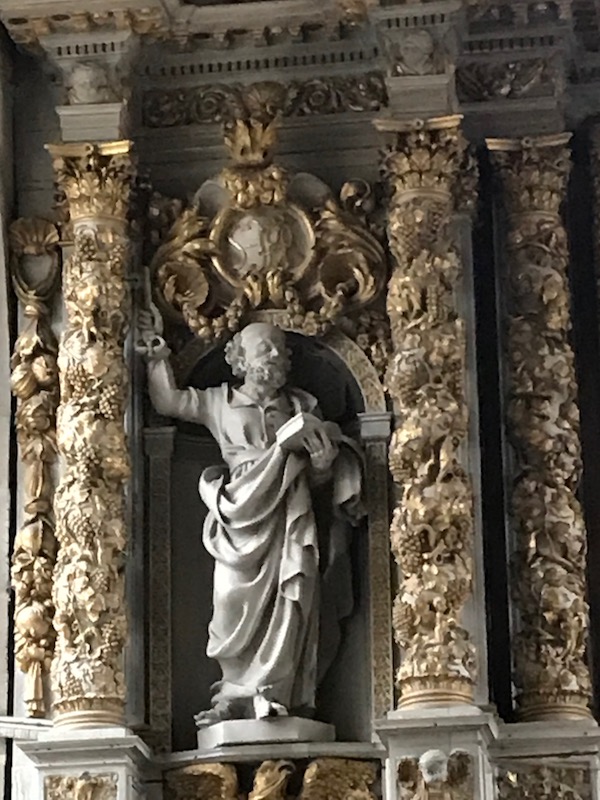
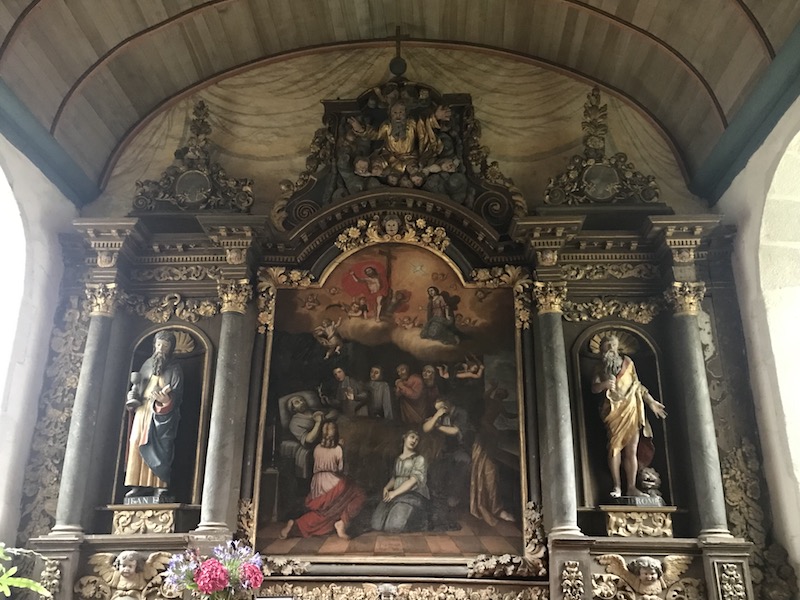
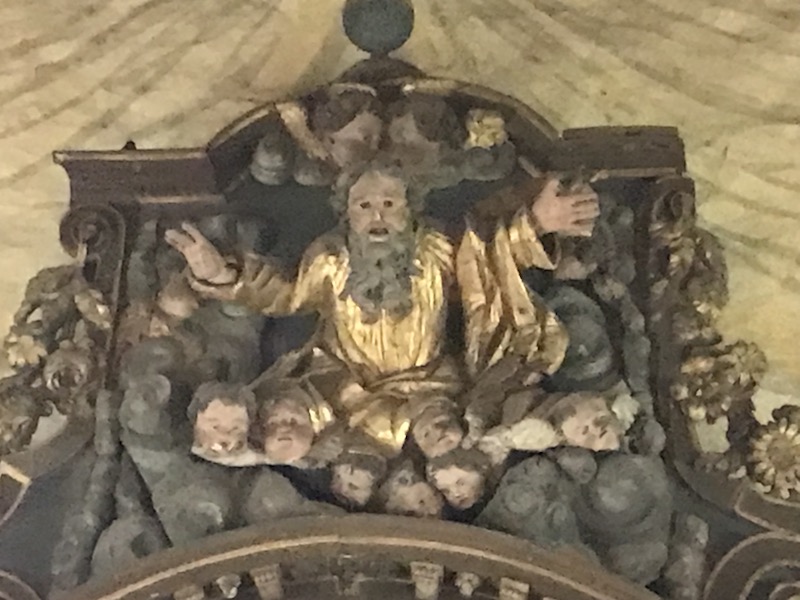
The baptismal font also has a really elaborate carved enclosure.
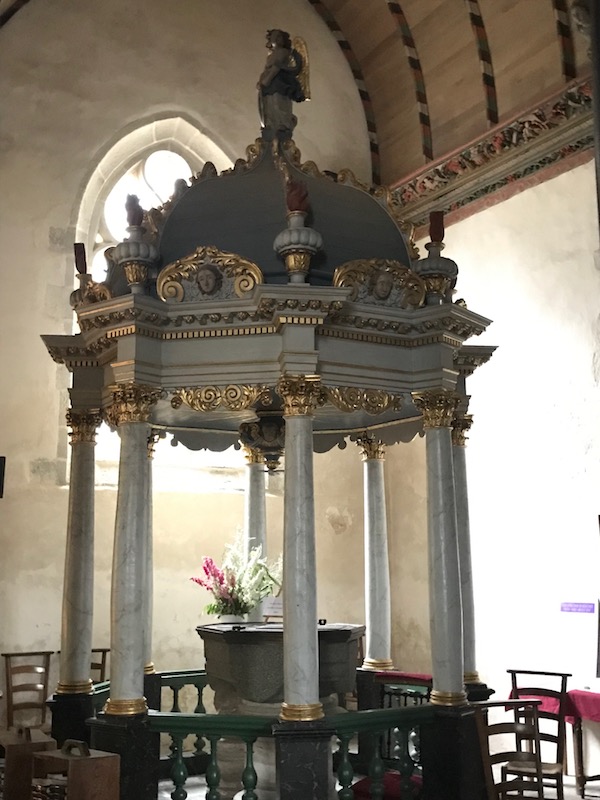
The Roscoff lighthouse was built between 1914 and 1917. Prior to this, there was originally a fire that was lit at the end of the old pier, but there wasn't enough light to safely guide ships across the dangerous area. Then in 1884, they tried a lantern supported by iron poles on top of the keeper's house but it wasn't all enough, so the town looked into building a higher tower.
